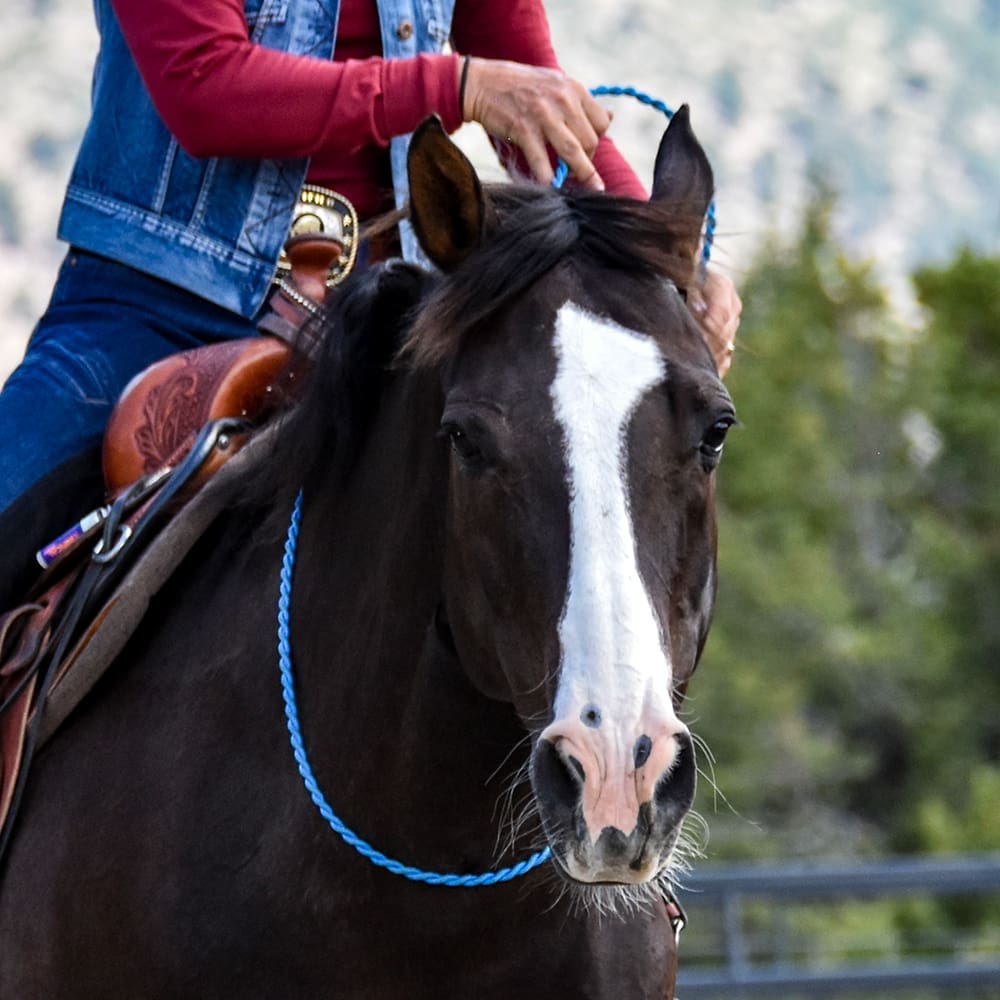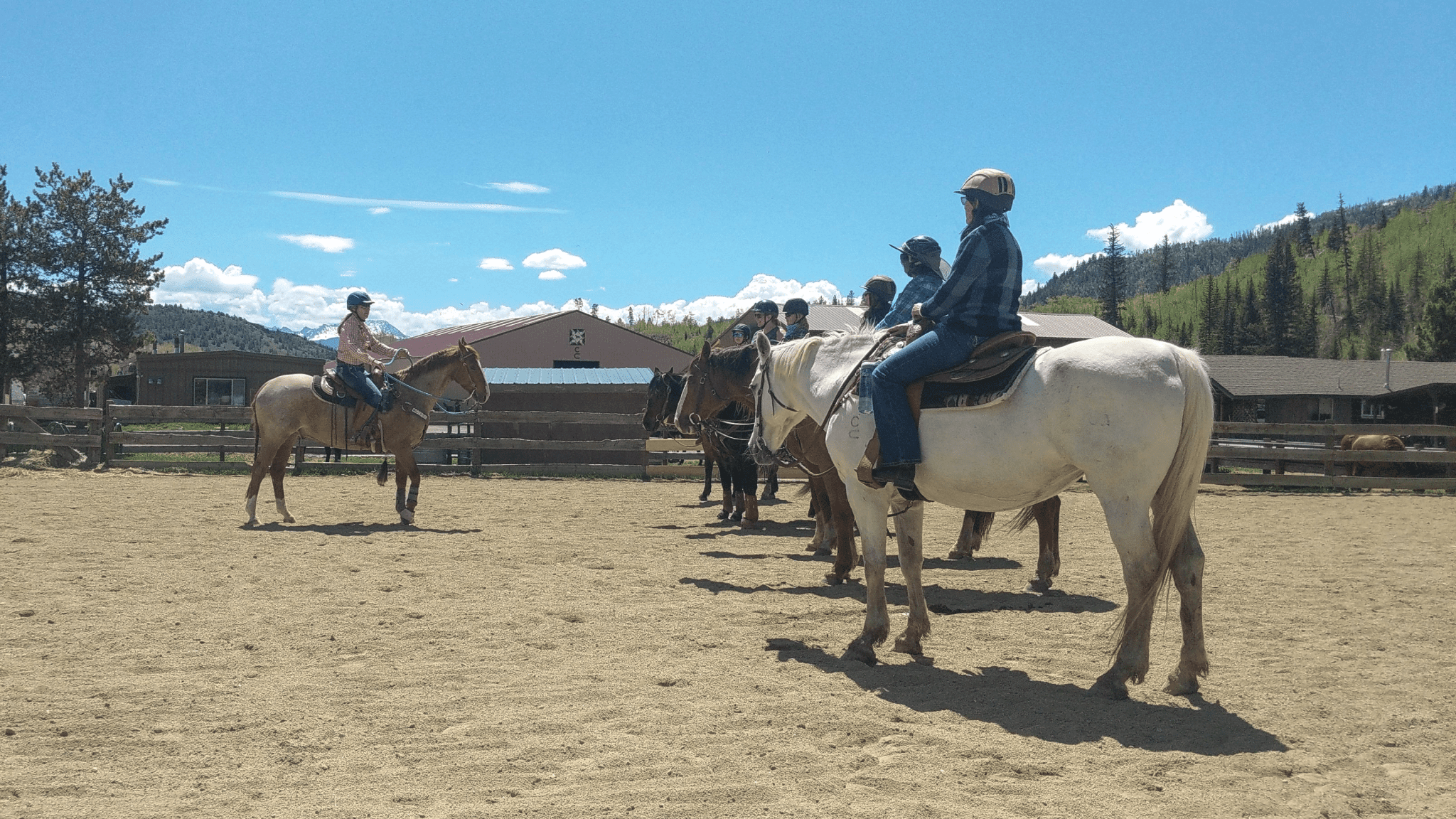Question: We purchased a 6 yr old mare approx. 6 mos ago. She was previously bridled with a D Ring Snaffle. We have tried transitioning her with other Snaffles and a Touch Plus. She seems to really fight the bit (tossing her head, etc.). I feel part of this is a maturity and confidence issue, but wonder what would be a good bit to move her to? I have had her teeth checked and there seems to be no problems there. Currently we are doing lots & lots of trail riding and just getting her confidence up. Thanks!
—Kathy
Answer: The first thing always to do in situations like this is to check for physical causes. Check her teeth to see if she has wolf teeth (very sharp little teeth on the front of the back sets of teeth), which can cause the horse a lot of pain with a bit in their mouth. Not all horses have wolf teeth but the ones that do generally have them removed at a young age. Another thing to check for is scarring in the mouth or on the tongue that may also be causing her pain.
Once a physical cause is ruled out, you can assume it is a training issue. The only reason a horse throws its head and resists the bit is because the rider is hurting the horse’s mouth and/or the pressure confuses the horse. Therefore, another bit is unlikely to solve the problem, unless you are going to a much milder bit.
In my experience, about 98% of the time, when a horse has a bitting problem, the rider, not the bit, is causing the problem. Changing bits, strapping the horse’s mouth shut or tying his head down will not resolve the problem, it simply puts a band-aid over the symptom.
Most people put relentless pressure on their horse’s mouths, rarely giving an adequate release to the horse. The more pressure on the bit, the more pain in the horse’s mouth, the more the horse becomes anxious and fractious. Often these horses will speed up in an effort to run away from the pressure, which ends up getting them more pressure because the rider gets more tense, and the downward spiral continues. In this scenario, the rider typically wants to put more bit in the horse’s mouth to control the speed and that generally makes the problem worse.
Changing bits will never fix a training problem, only training will. In fact, going to a stronger bit will almost always make a training problem worse, because the horse will have even more anxiety. Taking a fractious, anxious horse to a milder bit and putting a rider up that has good hands and lots of release, will almost always help the horse.
To resolve bitting problems, two things have to happen. First, the horse must be taught how he is supposed to respond—give to pressure, and when you give you will find a release. He must learn to give both laterally (to the side) and vertically (dropping his nose down and in). When you put light pressure on the reins, the horse must be taught that as soon as he gives, the pressure goes away. For most people, when the horse gives, they are unaware of it or being greedy and they continue to pull, so the horse loses his incentive to give.
Secondly, the horse must be given an escape from the pressure. The release must come within a second of the desired response of the horse; never hold continuous pressure on the reins. So often in clinics I see people applying relentless and meaningless pressure on the horse’s mouth for no reason whatsoever. The rider is oblivious to the pressure, but the horse is not. In fact, there is a metal bar in the horse’s mouth and he has nerves in his lips, tongue, gums and palate just like we do. No horse anywhere wants pressure on his mouth and he will always look for a way out of it. If giving to the pressure or doing what you asked doesn’t relieve the pressure, he will try something else like gaping his mouth open, tossing his head or running through the bridle. The horse does not have a bitting problem, he has a rider problem and he will almost always respond immediately to a rider with good hands.
I have no idea what a ‘Touch Plus’ bit is. There are no shortage horse training gadgets on the market because there are no shortage of people looking to buy a solution to their horse’s problems, rather than consider that the problem is them. My preference in bits for this case would be a Myler snaffle.
If I were you, I would take this horse back to a snaffle, have her mouth checked for physical causes, and keep her on a loose rein until she learns to trust your hands. Good luck to you!
JG
Get your Julie Goodnight/Myler Bits HERE



